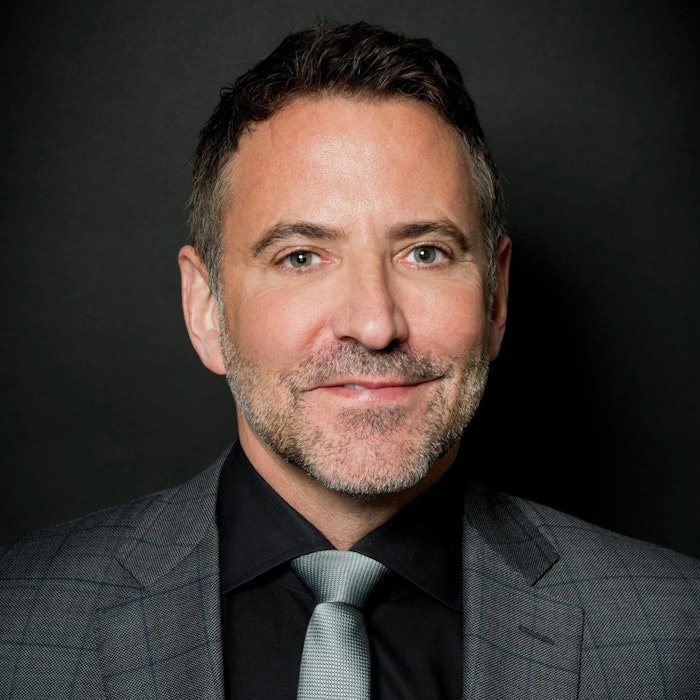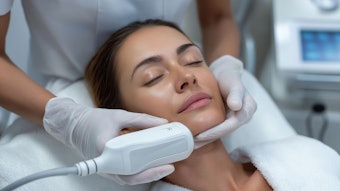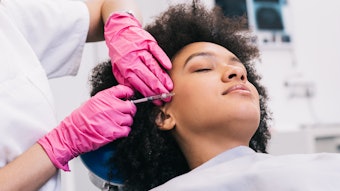
Rejuvenation of the jawline and neck is advancing to the point where minimally invasive techniques are now a viable alternative to undergoing more invasive surgeries to rejuvenate this delicate area of the body. A study published in the Aesthetic Surgery Journal (November 2022) by Gregory P. Mueller, M.D., et. al., “Light-Guided Percutaneous Neck Rejuvenation With Division of Platysma Bands and Suture Suspension: A Multicenter Retrospective Study,” confirmed that light-guided percutaneous suture suspension is a safe and viable option for improving neck contours with predictable results and a low risk of complications.
World renowned board-certified plastic surgeon and lead author, Gregory Mueller, M.D., explained the inspiration for developing the technique, “I created the MyEllevate technique because I was looking for a way to sharpen up the jawline and really sculpt everything without invasive surgery. Working on that for over a decade, my whole focus was to find a way to really sharpen the jawline on patients, giving them a more youthful look, without having to surgically open the area.” He explains the reasoning behind conducting the subsequent study, saying, “I wanted to look at other surgeon’s experience with the technology and the technique and see how their outcomes compared to mine. The great thing is, in our study we have 391 patients with five surgeons in three different centers. All the complication rates were less than 5% and the outcomes were very similar.”
Mueller sees the study as confirmation that his technique can be taught to other surgeons so they can reproduce similarly successful results, making it a kind of guide for surgeons wishing to learn how to utilize the technology successfully. “The paper shows that the MyEllevate procedure can be taught to surgeons of various experience and backgrounds, and all of them can learn the procedure quickly and have outcomes that are successful, very similar and with very low complication rates. In the future, I see this as a foundational paper that gives surgeons the confidence that they can learn this new technology and have success with their own patients.”
Mueller stresses that light guidance is a particularly important aspect of the technique, as it raises the success rate of the procedure significantly, making it far easier to teach to other surgeons. In addition, it is a completely new way of tightening the neck muscles without invasive surgery, whereas previously, the option was to do a thread lift. “It represents a totally new way of sewing the neck muscles. The procedure’s totally different, more complicated and longer-lasting than a thread lift, and the importance of the light guidance is key. We published a paper in January 2012, and in that paper, we had a revision rate of about 15% or more. That was because we didn’t have light guidance, so there is a need for light guidance and that’s part of the technology.”
The ideal patient for this procedure, according to Mueller, is “anyone who has a jawline that they’re starting to lose some definition because of the aging process. I also use it with my facelift and neck lift patients because it’s a way of addressing the muscles and glans without having to open the neck, so it has uses on all types of patients.”
While they did not measure patient satisfaction during the study, Mueller noticed that the high number of patients that underwent the procedure from doctors other than him provided positive insight into the satisfaction of these patients. Mueller says, “What it proves is that the procedure works really well because the patients referred their friends. So, patient satisfaction could be measured by the number of patients who underwent the procedure by other doctors besides myself. The new surgeons who just started the technique were extremely successful, and you can tell the reason why is because other patients were so pleased with the results.”
It is clear that this technique provides significant advancement for minimally invasive neck rejuvenation, and one that can be successfully adopted by other surgeons.











